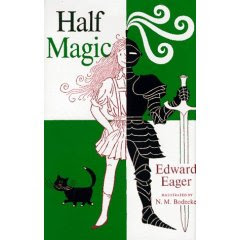 The Riskies are thrilled to have beloved Regency author Barbara Metzger with us today. She has won RWA’s RITA, the National Readers’ Choice Award, the Madcap Award for romantic comedy and two Career Achievement Awards from Romantic Times. You can learn more about Barbara and her books at http://www.barbarametzger.com/.
The Riskies are thrilled to have beloved Regency author Barbara Metzger with us today. She has won RWA’s RITA, the National Readers’ Choice Award, the Madcap Award for romantic comedy and two Career Achievement Awards from Romantic Times. You can learn more about Barbara and her books at http://www.barbarametzger.com/.
Her latest novel, THE HOURGLASS, garnered 4 ½ stars and a Top Pick from Romantic Times. Leave a relevant and original comment or question on this post for the chance to win an autographed copy!
Praise for Barbara Metzger and THE HOURGLASS
 “One of the genre’s wittiest pens, Barbara Metzger deliciously mixes love and laughter.”
“One of the genre’s wittiest pens, Barbara Metzger deliciously mixes love and laughter.”
“After reading Metzger’s marvelous new book, readers will know why she’s considered a grand mistress of the Regency. A smart, emotionally intense, three-hanky novel…”
—Romantic Times
The Interview
You’re well-known with romance readers for your unique voice. Did you set out to have your own comic prose, or was it something that emerged naturally as you wrote your novels?
I never set out to be a writer, much less have a voice. I never knew I had one until a reviewer mentioned it. The humor developed on its own too, although it is less prevalent in the latest books. My editor wants deeper, darker, books (I worry she wants a different author!) with less alliteration, less Regency cant, less “rompish” plots. Sigh.
What of your writing process did you have to change when you started writing the longer romances?
With the longer length I had to add more complex plots, more characters, and more dialogue. I still struggle to make the word count, and still miss the novellas and shorter traditional Regencies. And see 1, above. The longer books seem to require more depth, less sight-gags, one-liners, and puns. Sigh.
Speaking of changes–your new book is a paranormal! Where did you get the inspiration for this story?
I have never had a clue where my ideas come from. The Idea Fairy, maybe. But I have used paranormal elements many times in the past, with talking dogs, talking paintings, talking mice, ghosts, fairies, and angels. When my editor suggested something “different” I was ready with ideas I was never able to use before. After more than 3 dozen novels and a dozen novellas, I was delighted to play with new imaginary worlds.

Tell us about the new release, and books you have coming up in the future!
THE HOURGLASS is set in Regency times, after a stop in Hell, where the hero gambles with Satan for another chance at life. He’s been assigned to the Grim Reaper as Ar Death, one of the Dead Letter Carriers. He has to find his hourglass, his humanity, his soul, his heart. Which is where the heroine comes in, naturally. Signet gave it a gorgeous cover, the best I have ever had. RT loved the book, making it a Top Pick with 4 1/2 stars, and putting the hero on the KISS list. My next book is TRULY YOURS, for Sept. 2007. Its cover is by the same artist. It’s also a Regency-set paranormal, but altogether different. In this one, the heroine is accused of murdering her step-father, and the only one who can save her is a disgraced lord who has the unique, secret talent of being able to discern truth from lie. What a good time I had playing with that!
What were some of the challenges researching for these new projects?
Well, I have never been to Hell or met the Grim Reaper, and I have no idea how lie detectors work, so Imagination was Rampant. The challenge in both books was keeping the premises consistent.
What is it about the Regency era that first drew you to it?
It was not the Regency era that drew me so much as the Regency Romance, the comedy of manners, the wit, the repartee, lords and ladies, the notions of honor and True Love.
Are there any authors who inspired your own writing?
Georgette Heyer, of course, and Claire Darcy after her. But also Barbara Cartland in her era, for making the Regencies sweet, short— and popular.
We pride ourselves on writing “Risky Regencies”. Tell us what is “risky” about your books, including the new one!
 Well, if writing about Death isn’t risky, I don’t know what is! Maybe the Trilogy (ACE OF HEARTS, JACK OF CLUBS, QUEEN OF DIAMONDS) that was far more connected than most, or putting a serial killer in Regency London (A PERFECT GENTLEMAN.) For that matter I once put Elvis in a short story, “Love and Tenderness” in VALENTINES. And I wrote a whole Regency romance about Yankee baseball that few people realized. So you could say I often push the envelope. That gives way more avenues for plots and characters, and keeps the writing fresh for me, and for the reader, I hope.
Well, if writing about Death isn’t risky, I don’t know what is! Maybe the Trilogy (ACE OF HEARTS, JACK OF CLUBS, QUEEN OF DIAMONDS) that was far more connected than most, or putting a serial killer in Regency London (A PERFECT GENTLEMAN.) For that matter I once put Elvis in a short story, “Love and Tenderness” in VALENTINES. And I wrote a whole Regency romance about Yankee baseball that few people realized. So you could say I often push the envelope. That gives way more avenues for plots and characters, and keeps the writing fresh for me, and for the reader, I hope.
Writing is a risky business from the start. Will the book sell? Will people like it? Will I still like it after months of work or will I be bored with the characters and plot? Above all, writing is hard work. The rewards can be great though: seeing your books on the shelf; having a small book store owner in Florida say “Hi, Mom,” when your mother walks in; the joy that comes from creating, imagining, making something out of nothing; and knowing that other people like what you are fortunate enough to do. I love to hear from readers— instant reassurance and encouragement. Anyone can write to me through my web site, http://www.barbarametzger.com/.
What are some new risks you’d like to take in the future?
I wrote one contemporary (LOVE, LOUISA) and I’d love to write more, maybe paranormal, maybe not.
Will you be making any appearances or booksignings in the near future?
Not if I can help it. I’d rather be writing a new book instead! I did my best promoting THE HOURGLASS by getting that color ad in RT so people could see the beautiful cover.
Thank you for taking the time to answer our questions!
 The first actual book I ever read was L. Frank Baum’s “Ozma of Oz.” I was in first grade, and my book-loving third-grade brother wanted to introduce me to the Oz books, which were among his favorites.
The first actual book I ever read was L. Frank Baum’s “Ozma of Oz.” I was in first grade, and my book-loving third-grade brother wanted to introduce me to the Oz books, which were among his favorites.As a kid, I used to make lists of my favorite authors, and favorite books. Ten of each wasn’t enough — so it became “my ten favorite authors” and “my other ten favorite authors” and “seven others who are also really really good.”
 So — what books turned you onto reading as a child? Which ones did you love best? Which authors stirred your imagination, or inspired you, or drew your greatest devotion?
So — what books turned you onto reading as a child? Which ones did you love best? Which authors stirred your imagination, or inspired you, or drew your greatest devotion?












